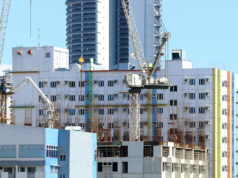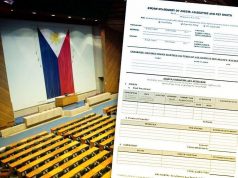Next administration faces ‘twin deficits’ — JPMorgan

THE NEXT administration will need to manage both fiscal and monetary policy as it faces twin current account and budget deficits this year, JPMorgan Chase & Co. said.
Fiscal spending during the coronavirus disease 2019 (COVID-19) pandemic led to record deficits, while the current account balance improved with less investment spending, JPMorgan Chase economist Nur Raisah Rasid said in a note on Friday.
“However, we expect the economy to head into another twin deficit episodes this year as the next administration likely will pursue an expansionary fiscal policy to support the ongoing recovery, with the corollary decline of external balances, raising concerns over fiscal and monetary policy management,” she said.
Filipino voters will elect a new president in May.
Ms. Rasid also noted that the Bangko Sentral ng Pilipinas “will likely tolerate growth-induced peso weakness up to a point,” beyond which may challenge the current accommodative monetary policy aimed at supporting economic recovery.
The country’s budget deficit reached P1.33 trillion in November, up by 24.63% from a year earlier.
Meanwhile, the current account deficit was at $2.63 billion as of September, a reversal from the $7.79-billion surplus a year earlier.
The Philippines should manage the expected twin deficits this year while keeping in mind domestic financial conditions, debt management and budget execution, Ms. Rasid said.
“In the longer run, we think decisive reforms that address job creation, wage growth and education will be key in determining the medium-term course of the economy.”
She said improving the business climate could attract more foreign direct investments, while raising tax compliance could speed up fiscal consolidation.
“Without revenue-enhancing measures, the fiscal situation likely will remain challenging with revenues as a share of gross domestic product (GDP) in recent decades not reaching levels seen during the Ramos administration,” Ms. Rasid said.
Stronger infrastructure spending could hasten economic recovery, she added.
“While capital investment as a share of GDP has risen since 2016, reaching a level comparable to that of ASEAN (Association of Southeast Asian Nations) peers, medium-term challenges remain, stemming from the relatively low quality of infrastructure in the Philippines, which could deter foreign direct investment,” she said.
“Policies that strengthen the execution of infrastructure spending are critical for the next administration and could pave the way for stronger economic growth.”
Meanwhile, the Department of Finance (DoF) expects the country’s debt-to-GDP ratio to stabilize when the government relaxes its pandemic response spending.
The Philippines’ growing debt was largely due to these pandemic-related expenses, with the government getting financing both domestically and externally, DoF Chief Economist Gil S. Beltran said.
“Fiscal consolidation and economic recovery will be very critical in preserving fiscal stability,” he said in an economic bulletin on Saturday. “The debt-GDP ratio is expected to stabilize as pandemic-related spending is wound down.”
The Philippine government increased borrowings to finance its coronavirus pandemic response in the past two years. The government has recorded P11.73 trillion in outstanding debt as of end-2021, growing by 19.7% year on year, preliminary data from the Treasury bureau showed.
This meant the debt-to-GDP ratio is now at 60.5%, higher than 54.6% a year earlier and slightly above the 60% threshold considered as manageable by multilateral lenders for developing economies. It is also the highest debt-to-GDP ratio since 65.7% in 2005.
JPMorgan expects the debt-to-GDP ratio to hit 62.3% by the end of this year.
“While this debt burden is nowhere near the all-time high of 74.4% of GDP recorded during the early days of the Arroyo administration, which culminated in fiscally prudent strategies over the subsequent years, we expect debt ratios to decline faster for BBB-rated peers this year, trends that markets will be watching closely,” Ms. Rasid said.
The government raised $25.8 billion in financing and grants from multilateral lenders, development partners and foreign currency denominated global bonds for its pandemic response since the start of lockdowns in 2020 to Jan. 14 this year.
To manage the country’s debt, the World Bank has said that the government needs to roll out a fiscal consolidation plan based on the right mix of expanded taxation and productive spending. — Jenina P. Ibañez



